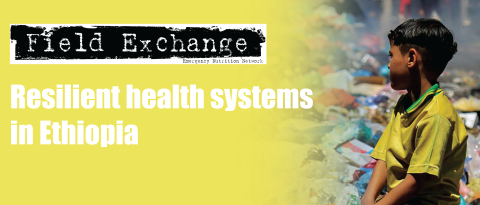Driving evidence to action: The Council of Research & Technical Advice on SAM (CORTASAM)
Amy Mayberry is Head of Evidence at Action Against Hunger, where she supports the technical and research activities of No Wasted Lives, including CORTASAM. She previously worked on the Evidence, Measurement & Evaluation Team at The Children’s Investment Fund Foundation (CIFF).
Saul Guerrero is Director of International Nutrition Initiatives at Action Against Hunger USA and interim Coordinator of the No Wasted Lives coalition. He previously worked for Valid International, supporting the design, implementation and evaluation of community-based management of acute malnutrition (CMAM) interventions. In 2012 he co-created the Coverage Monitoring Network (CMN).
Dr Mark Manary is Associate Professor of Paediatrics at Washington University School of Medicine and Lecturer at Malawi School of Medicine in Blantyre, Malawi. He has been involved in nutrition and metabolism research in Malawi for the past two decades and served as principal investigator for the ready-to-use therapeutic food (RUTF) studies there. He is current Co-Chair of CORTASAM.
Dr Noel Marie Zagre is Regional Nutrition Advisor for UNICEF in the West and Central Regional Office (WCARO), based in Dakar, Senegal. He has worked with UNICEF across Sub-Saharan Africa, East Asia, the Pacific and South Asia for the past 12 years and previously held senior roles at Helen Keller International and the National Health Sciences Research Institute in Burkina Faso. He is current Co-Chair of CORTASAM.
An estimated 52 million children under five years of age suffered from acute malnutrition, of which 16.9 million suffered from severe acute malnutrition (SAM) in 2016 (UNICEF, WHO and World Bank, 2016). Treatment for acute malnutrition, which puts the lives of millions of children at risk each year, is effective and significant advances have been made in the past decade to improve the quality and coverage of programmes. More children are being successfully treated for SAM than ever before, yet less than 20% of children with SAM currently receive the treatment they need (UNICEF, 2015).
As part of the global efforts to address these gaps and improve the prevention and treatment of acute malnutrition, the No Wasted Lives coalition was formed with the aim of doubling the number of children receiving treatment to six million per year by 2020. This is a critical step towards achieving universal coverage of all SAM children by 2030, while concurrently working towards improved prevention measures and reducing the number of children who fall into acute malnutrition. One of the biggest challenges to achieving this scale-up of treatment is evidence, both in terms of generating new evidence and using existing evidence effectively to improve programmes and policies. Despite advances made to date, significant gaps remain in the existingevidence base to support the successful and meaningful scale-up that will achieve these ambitious goals.
To address the gaps, the No Wasted Lives coalition founded the Council of Research & Technical Advice on SAM (CORTASAM) in 2016. Comprised of leading experts in child health and nutrition across the world and representatives of regions with the highest burden, the Council’s goal is to drive the use of evidence for action in order ultimately to reach more children with effective treatment and prevention programmes. The Council aims to do this in three ways:
- Set research priorities: Identify research and knowledge gaps to guide global research priorities in the prevention and treatment of acute malnutrition;
- Drive the use of evidence in programmes: Provide a systematic and transparent review of the emerging evidence, resulting in interim advice on the operational implications and application; and
- Drive the use of evidence in policies: Coordinate with the World Health Organization (WHO) to ensure critical evidence gaps are filled and result in integration of emerging evidence into normative guidance.
A critical first step for CORTASAM was to identify key research priorities across acute malnutrition. By taking a comprehensive review of the research questions across the sector and then prioritising, we can better support the process of filling critical gaps in the evidence and improve coordination and action to scale up evidence-based prevention and treatment programmes. The research prioritisation exercise recently led by CORTASAM is presented in this edition of Field Exchange. The exercise used a well-established methodology developed by the Child Health and Nutrition Research Initiative (CHNRI), a systematic and transparent approach that has produced a set of research priorities and, we hope, a critical strategic steer and leadership in this area.
Looking ahead, the aim of CORTASAM is to expand on these priority areas and develop clear action plans to progress them between now and 2020. To do this we will need to use reviews of the available evidence, a mapping of ongoing research that will produce new evidence in these areas (already underway; see below) and global and regional consultations to identify the critical gaps that need addressing to drive the use of evidence for action. Our commitment is to continue our work to advocate for and use the research and evidence needed to truly make an impact. But we cannot do this alone. No Wasted Lives and the work of CORTASAM are a platform to guide and coordinate global efforts and we rely on the experts, researchers, and implementers like you to help us achieve this goal.
More information and updates on the work of CORTASAM and No Wasted Lives can be found at www.nowastedlives.org
An initial mapping of ongoing research across the research areas and priorities is now available on The State of Severe Malnutrition website; see: www.severemalnutrition.org/en/content/ongoing-research.
References
UNICEF, WHO and World Bank. Joint child malnutrition estimates – levels and trends (2016).
UNICEF (2015). UNICEF Annual Results Paper.


